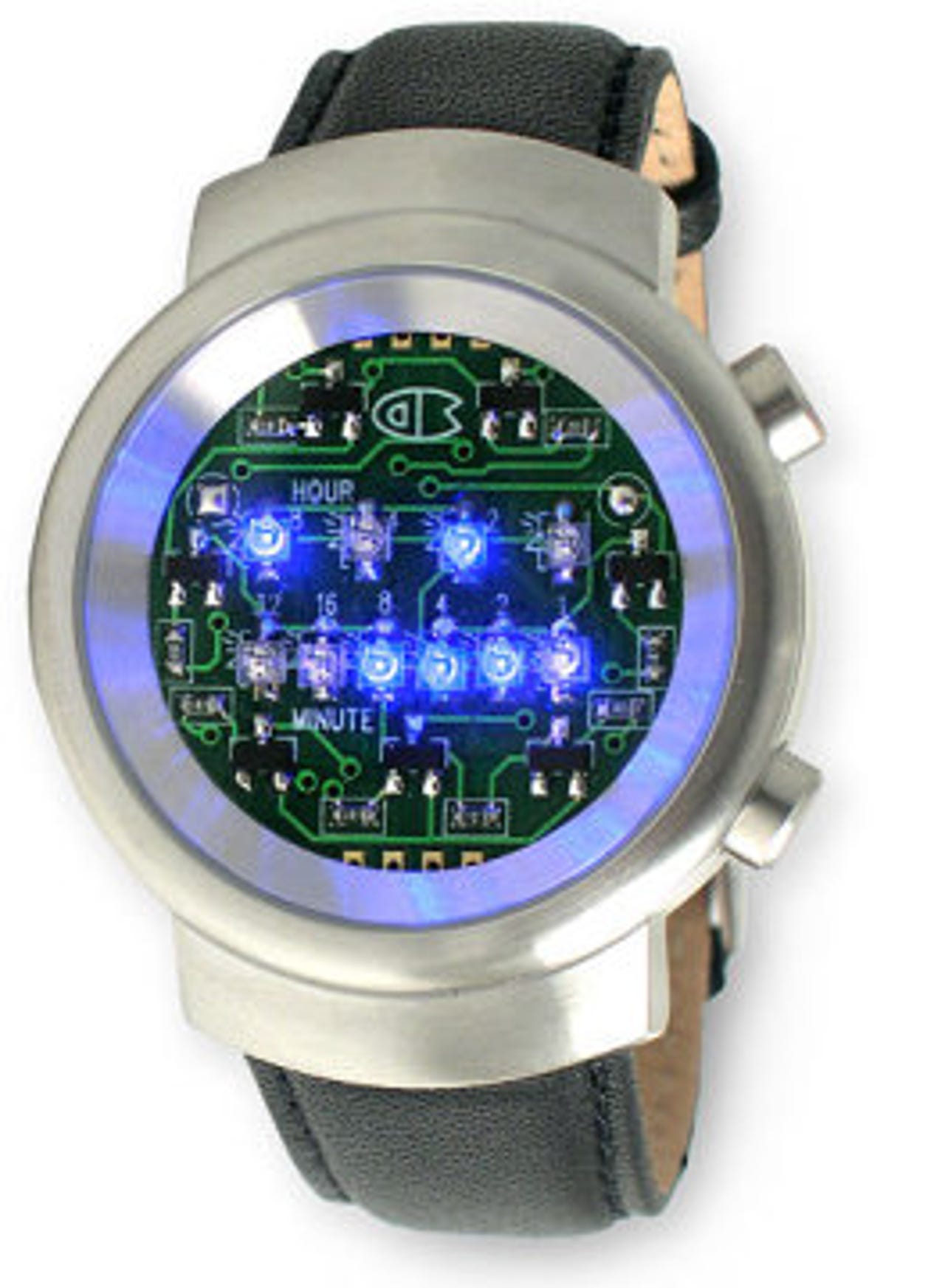iPhone apps, Antique PCs, Microsoft R&D and supercomputers


Photos of the month - May 2009
High tech watches kicked off May's crop of photo stories, from the watch pictured above which tells the time in binary, to wrist-candy packing Bluetooth and HSDPA connectivity from the likes of LG and Sony Ericsson.
Click here to see all the high tech watches.
Photo credit: Thinkgeek.com
Our photos of the National Museum of Computing's PC Gallery which opened last month included the retrotastic Commodore PET 2001 pictured above - which had a built-in monochrome monitor, a 1MHz processer and up to 8KB of memory. How deliciously quaint. The machine, which launched in 1977, also came with a hefty £850 price-tag.
Click here to see more machines from the gallery.
Photo credit: Nick Heath/silicon.com
The huts at Bletchley Park - which houses the National Museum of Computing and formerly played home to WWII codebreakers - are shown to be in a bad state of repair in this photo story.
Hut six, seen here, the main centre for decrypting German air force and army messages, and hut three, are both rotting and boarded up after decades of neglect. The Bletchley Trust reckons it needs about a further £2m to rebuild them.
Click here to see more.
Photo credit: Nick Heath/silicon.com
Google's Android open mobile OS platform took centre stage for this photo story depicting 10 handy Android apps.
Pictured here is PicSay, an image editing app, running on the G1 handset made by HTC.
Click here to see all 10 Android apps.
Photo credit: Natasha Lomas/silicon.com
silicon.com also got snappy at Microsoft Research's recently opened R&D facility in Cambridge.
Pictured here is part of an augmented reality demonstration by software giant, where animated bubbles are placed over actual camera footage. The idea is for the user to follow the direction of the bubbles with the camera in order to locate a virtual treasure chest.
Follow this link to see more of Microsoft's research tech.
Photo credit: Tim Ferguson/silicon.com
This month, sneaker-maker Reebok got in on the iPhone action by turning out an app which lets you design a pair of shoes on your phone and then have an actual pair made up.
Users can change up to 23 different areas on the shoes, tapping on an area to select it and then choosing from 19 colours and four materials options. Personalised text can also be added.
Click here to see how the app works.
Image credit: Reebok
Supercomputer projects were at the heart of this photo story which rounded up five examples of pioneering high-performance computing (HPC) research in the UK.
The University of Leicester's Spectrum HPC is one of the main supercomputers churning through millions of observations from robotic wide angle telescopes - in the hope of a telltale glimpse of a distant planet. By analysing data from telescopes trained on one piece of sky for a long period of time, the supercomputer can spot the regular dimming as a planet passes in front of its sun. Pictured is the same motion with the planet Mercury passing in front of the sun in our solar system.
Follow this link to read more about the biggest supercomputing projects in the UK.
Photo credit: edhiker, via Flickr under the following Creative Commons licence
If screengrabs of as-yet-unreleased Microsoft wares float your boat you'll love this pictorial peek at the technical preview of Office 2010 - including Word 2010, shown above - due for full release next month.
Click here to take a look at the upcoming release.
Photo credit: Renai LeMay/ZDNet Australia
Second Life now has a new use as a training ground for would-be doctors.
London's Imperial College has set up a model of a hospital inside the virtual world, to help medical students learn more about spotting symptoms, diagnosing illnesses and treating patients.
For instance, in the respiratory ward, pictured above, students can listen to audio samples of a patient with breathing difficulties by clicking on the board on the wall and pick what action to take next by clicking on a virtual blackboard.
To see more of the virtual hospital check out the full photo story.
Photo credit: Imperial College
Army tech was on show last month in West London - including this virtual battlefield simulator pictured above - as part of a recruitment drive.
Click here to see the Army tech on offer.
Photo credit: Commander Regional Recruiting
From army tech to bus tech - May was the 30th anniversary of London Buses' emergency control centre, CentreComm. Over its three decades, the hub has journeyed from radios and pen and paper to GPS tracking to get a steer on where buses are.
Pictured here are CentreComm operators in 1992 - the year computer systems to log calls from drivers were installed.
Click here to see CentreComm in action.
Photo credit: Transport for London
Today's technology has also made this piece of kit possible: the Espresso Book Machine at the Blackwell bookshop in London. Espresso enables on-demand book printing so customers wanting an out-of-print book don't have to go away empty-handed.
Shown here is the first stage of the process: printing the cover of the book. The entire printing process takes between five and 20 minutes depending on the number of pages and source of the data.
Click here to see Espresso in action.
Photo credit: Tim Ferguson/silicon.com
Here's another shiny bit of kit: a Google Android-powered handset made by HTC and called 'Ion' which the software maker handed out to thousands of developers attending its I/O conference in San Francisco. It may look similar to the HTC Magic handset, on Vodafone's network, but the Ion is unlocked and intended for developers' hands only.
Click here to see the Ion.
Photo credit: Stephen Shankland/CNET
Last up, photos of Microsoft's freshly tweaked search tool Bing (previously known as Kumo).
Is Bing a Google killer? Click here to check out the pics and decide for yourself.
Photo credit: Microsoft